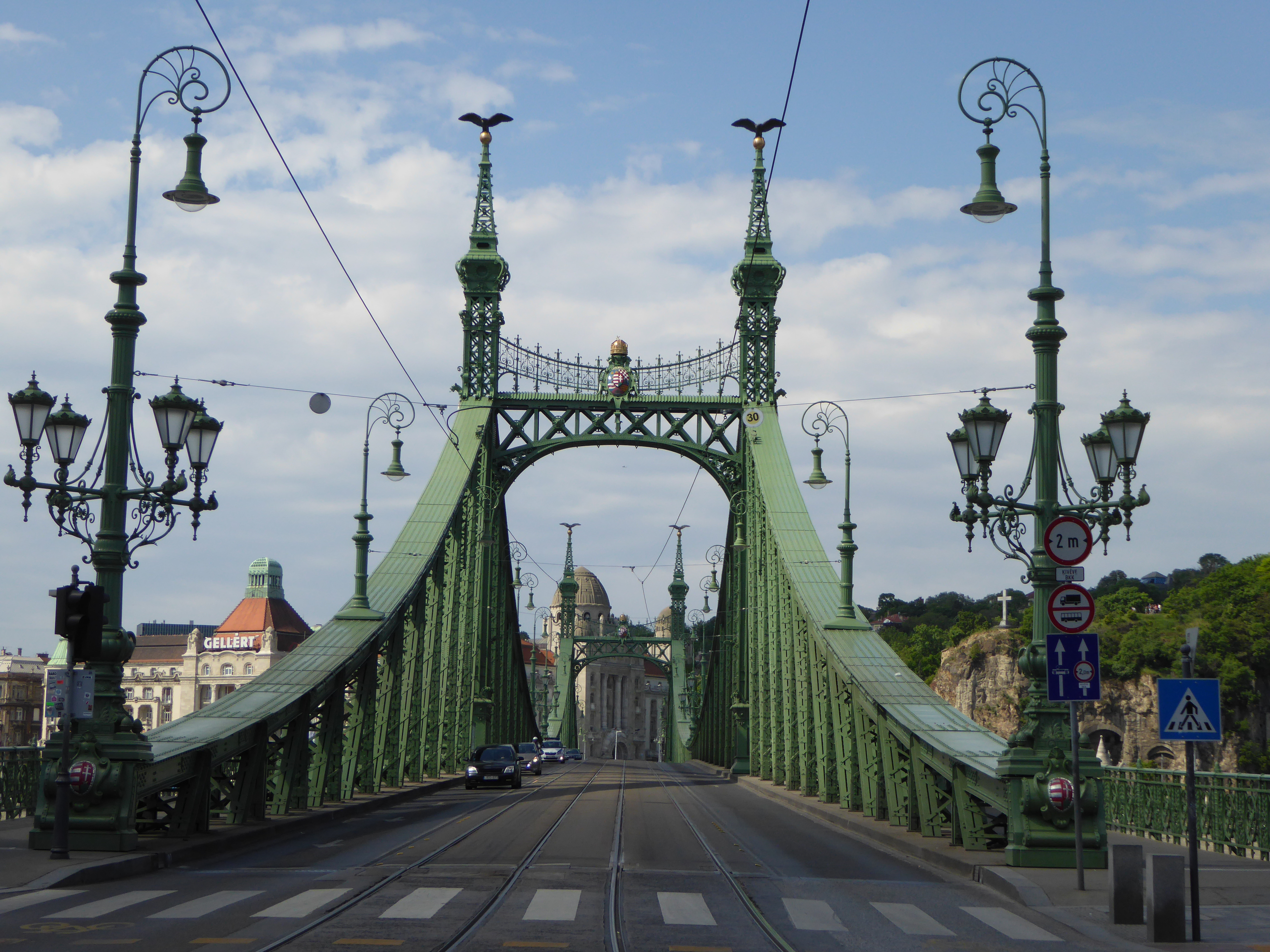
Budapest, one of the iron bridges
The Austro-Hungarian Empire was one of the latecomers in industrialisation together with Switzerland, the Netherlands and Scandinavia. Its reputation of economic backwardness in the 19th century is largely unjustified as only some portions of the empire were really backward, as can be seen above. To an even greater extent than France or Germany the empire was characterised by regional diversity and disparity. The western provinces – “Cisleithania” -, especially Bohemia, Moravia and Austria proper, were economically far more advanced than the eastern part – “Transleithania”. In the west the first stirrings of modern economic growth could be observed as early as the second half of the 18th century, but the topography made internal and international transport and communication difficult and expensive and the poverty of natural resources, most of all coal hindered economic development.
In the 18th century textile, glass, iron and paper industries grew up in Austria proper and the Czech lands. The textile industries were by far the largest, especially wool and linen and a fledgling cotton industry developed since 1763. The technology was traditional, but already a few proto-industries with large workshops and the use of mechanical power were established, yet most of the production was organised under the putting-out system. Mechanisation began in the end of the 18th century and spread to the woollen and linen industry later. By the 1840s the empire was second only to France on the continent in the production of cotton goods. The well-established industries of the west continued to expand gradually after the revolution of 1848.
As everywhere the business cycle produced short-term fluctuations in the rate of growth. But the social institutions in the empire were extremely hostile to growth, especially the persistence of serfdom, which until 1848 hindered economic expansion. The reforms of Joseph II in the 1780s had already allowed peasants to leave the land of their lords and to market their crops as they chose and to pay rent and taxes to their feudal lords, but little more. The abolition of serfdom was to grant the peasants freehold tenures and substitute taxes paid to the state that were formerly paid to the lord. An improvement in agricultural productivity had already been started by the noble landowners. In 1850 the abolition of all internal customs frontiers created an empire-wide customs union but the territorial division of labour had already been well established before: the export of manufactured goods from Austria to Hungary and the Hungarian exports of agricultural products to Austria.
Another obstacle to more rapid growth was the monarchy’s foreign trade policy which remained staunchly protectionist and by that helped Prussia to exclude it from the German customs union, the “Zollverein”. High tariffs further limited imports and exports because the high-cost protected industries were unable to compete on the world market. Yet the major reason for slow economic growth was the diversity in levels of education and literacy. The Austrian half had the same levels as France, yet unevenly distributed, but the Hungarian half’s level of education and literacy was even lower. A distinctive west – east gradient was obvious in this field as well, which had serious consequences for the economic development due to the high correlation between literacy, industrialisation and per capita income.
Transport played a crucial role in the industrialisation process and as much of the country is mountainous land transport was expensive and water transport was more or less non-existent. Few canals had been built, the Danube and a few other large rivers flow eastward and southward, away from the large markets and industrial centres. Only since the 1830s could steamboats be used for upstream navigation. The earliest railways were constructed in Austria and the Czech lands. Only after the Compromise with Hungary in 1867 Hungary invested more in the transport infrastructure. This consolidated the geographical division of labour and the west – east gradient. Mainly grain and flour was transported in the eastern part of the empire as Budapest developed into an industrial centre, the largest milling centre in Europe. The Hungarian industry concentrated on food products, the processing of food and the manufacturing of machinery in this sector while Austria and Bohemia put the emphasis on textiles. In Budapest new modern iron bridges across the Danube were built and the first underground line on the continent.
The charcoal-fired iron industry had existed in the Alps for centuries; especially in Bohemia, which had a long tradition of metal working. With the advent of coke, charcoal industries declined. In Bohemia and Austrian Silesia, better endowed with coal, modern metallurgical industries developed since the 1830s. Not only the primary production of pig iron, but refining and fabricating was established as well together with machinery and machine-tool factories and heavy chemical industries. Some rather sophisticated industries grew up around Vienna and Lower Austria such as the locomotive factory in Wiener Neustadt. Austria steadily fell behind the united Germany in industrial growth, but the industry in the western half continued to grow, the eastern half caught up after1867. At the beginning of the 20th century the western half was about the same level of development as the average for Western Europe, but the eastern half was lagging behind, yet well in advance of the rest of Eastern Europe.
Literature: Cameron, Rondo, A Concise Economic History of the World, OUP 1997
